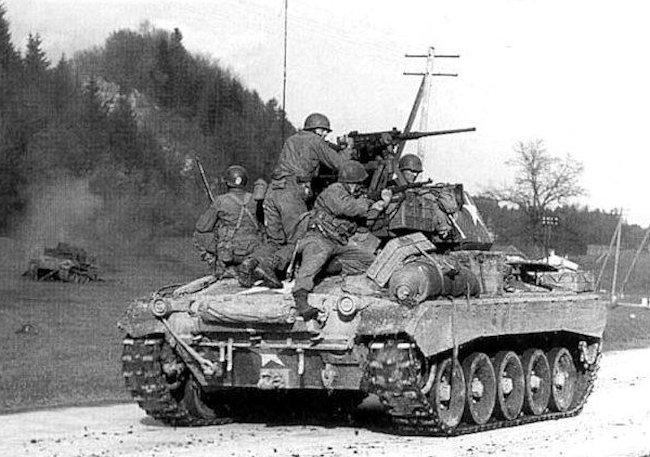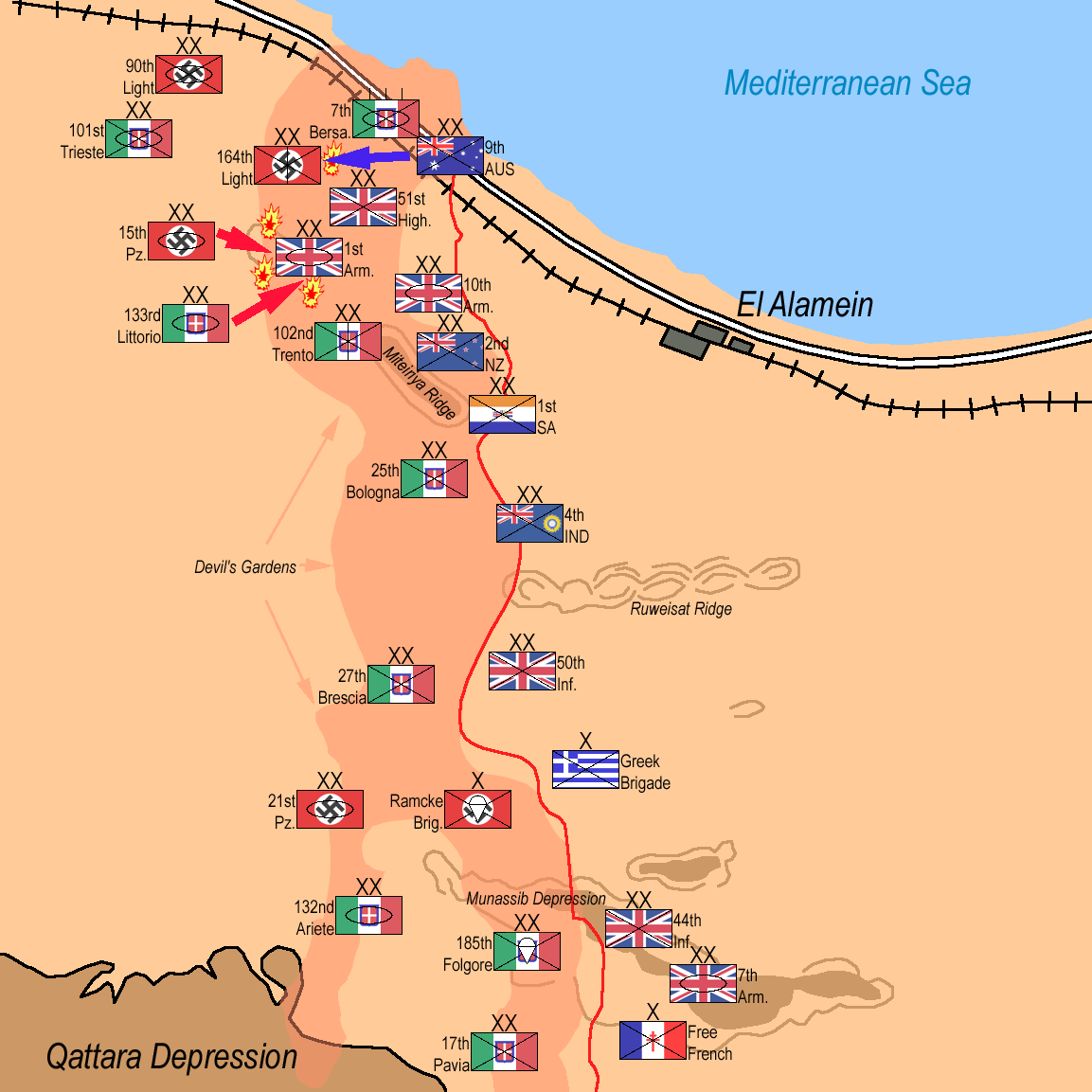|
Cavalry Tank Museum, Ahmednagar
Cavalry Tank Museum is a military museum in Ahmednagar in the state of Maharashtra, India. It was established by the Armored Corps Centre and School in February 1994. It is the only museum of its kind in Asia and houses about 50 exhibits of vintage armored fighting vehicles. Collection The oldest exhibit is the silver Ghost Rolls-Royce Armoured Car (Indian Pattern). The older exhibits date to First World War vintage and served on the battlefields of Cambrai, the Somme, and Flanders. A large number of vehicles are from Second World War period. Among the exhibits there are British Valentine and two Churchill Mk. VII infantry tanks, along with a Matilda II of similar type, an Imperial Japanese Type 95 Ha-Go light tank and a Type 97 Chi-Ha medium tank, a US Sherman Crab mine-flail tank, a British Centurion Mk. II main battle tank (MBT), a Nazi German Schwerer Panzerspähwagen light armoured car and Indian Vijayanta MBT. Also on display is a British Archer tank destroyer (ba ... [...More Info...] [...Related Items...] OR: [Wikipedia] [Google] [Baidu] |
Ahmednagar
Ahmednagar (), is a city located in the Ahmednagar district in the state of Maharashtra, India, about 120 km northeast of Pune and 114 km from Aurangabad. Ahmednagar takes its name from Ahmad Nizam Shah I, who founded the town in 1494 on the site of a battlefield where he won a battle against superior Bahamani forces. It was close to the site of the village of Bhingar. With the breakup of the Bahmani Sultanate, Ahmad established a new sultanate in Ahmednagar, also known as Nizam Shahi dynasty. Ahmednagar has several dozen buildings and sites from the Nizam Shahi period. Ahmednagar Fort, once considered almost impregnable, was used by the British to house Jawaharlal Nehru (the first prime minister of India) and other Indian Nationalists before Indian independence. A few rooms there have been converted to a museum. During his confinement by the British at Ahmednagar Fort in 1944, Nehru wrote the famous book ''The Discovery of India''. Ahmednagar is home to the Indian A ... [...More Info...] [...Related Items...] OR: [Wikipedia] [Google] [Baidu] |
Archer (tank Destroyer)
The Self Propelled 17pdr, Valentine, Mk I, Archer was a British tank destroyer of the Second World War based on the Valentine infantry tank chassis fitted with an Ordnance QF 17 pounder gun. Designed and manufactured by Vickers-Armstrongs, 655 were produced between March 1943 and May 1945. It was used in north-west Europe and Italy during the war; post-war, it served with the Egyptian Army. This vehicle was unusual in that its gun faced the rear of the chassis instead of the front. Design and development The 17 pounder anti-tank gun was very powerful but also very large and heavy and could be moved about the battlefield only by a vehicle, which made the gun more effective in defence than in the attack. A variant of the Churchill tank had been built in 1942 as a self-propelled gun - the "3-inch Gun Carrier" - and the US was expected to be able to provide the 76 mm armed M10 tank destroyer through Lend-lease. Other projects were considered using obsolete tank chassis, inclu ... [...More Info...] [...Related Items...] OR: [Wikipedia] [Google] [Baidu] |
AMX-13
The AMX-13 is a French light tank produced from 1952 to 1987. It served with the French Army, as the Char 13t-75 Modèle 51, and was exported to more than 26 other nations. Named after its initial weight of 13 tonnes, and featuring a tough and reliable chassis,''The Complete Guide to Tanks and Armoured Fighting Vehicles'', it was fitted with an oscillating turret built by GIAT Industries (now Nexter) with revolver type magazines, which were also used on the Austrian SK-105 Kürassier. Including prototypes and export versions, over a hundred variants exist, including self-propelled guns, anti-aircraft systems, APCs, and ATGM versions. Development The tank was designed at the Atelier de Construction d'Issy-les-Moulineaux (AMX) in 1946 to meet a requirement for an air-portable vehicle to support paratroopers. The first prototype ran from 1948. The compact chassis had torsion bar suspension with five road-wheels and two return rollers; the engine runs the length of the tank on ... [...More Info...] [...Related Items...] OR: [Wikipedia] [Google] [Baidu] |
M41 Walker Bulldog
The M41 Walker Bulldog, officially 76-mm Gun Tank, M41, was an American light tank developed for armed reconnaissance purposes. It was produced by Cadillac between 1951 and 1954 and marketed successfully to the United States Army as a replacement for its aging fleet of World War II vintage M24 Chaffee tanks. Although engineered as a reconnaissance vehicle, the M41's weight and armament also made it effective in the close infantry support role and for rapid airborne deployments. Upon entering US service, all M41s received the designation ''Little Bulldog'' and subsequently, ''Walker Bulldog'' after the late General Walton Walker, who was killed in a Jeep accident in 1950. The M41 was the first postwar American light tank to see worldwide service, and was exported in considerable numbers by the United States, particularly to Asia. Development of the M41 proceeded slowly until the outbreak of the Korean War, when the US Army's renewed demands for more tanks resulted in its being ru ... [...More Info...] [...Related Items...] OR: [Wikipedia] [Google] [Baidu] |
M24 Chaffee
The M24 Chaffee (officially Light Tank, M24) was an American light tank used during the later part of World War II; it was also used in post–World War II conflicts including the Korean War, and by the French in the War in Algeria and the First Indochina War. In British service it was given the service name Chaffee after the United States Army General Adna R. Chaffee Jr., who helped develop the use of tanks in the United States armed forces. Although the M41 Walker Bulldog was developed as a replacement, M24s were not mostly removed from U.S. and NATO armies until the 1960s and remained in service with some Third World countries. Development and production history British combat experience in the North African campaign identified several shortcomings of the M3 Stuart light tank, especially the performance of its 37 mm cannon. A 75 mm gun was experimentally fitted to a Howitzer Motor Carriage M8 – an M3 tank with a larger turret – and trials indicated that a 7 ... [...More Info...] [...Related Items...] OR: [Wikipedia] [Google] [Baidu] |
M47 Patton
The M47 Patton was an American main battle tank, a development of the M46 Patton mounting an updated turret, and was in turn further developed as the M48 Patton. It was the second American tank to be named after General George S. Patton, commander of the U.S. Third Army during World War II and one of the earliest American advocates of tanks in battle. The M47 was the U.S. Army's and United States Marine Corps, Marine Corps' primary tank, intended to replace the M26 Pershing and M46 Patton medium tanks.although the Ordnance Committee Minutes/OCM #33476 ceased utilizing the heavy, medium, and light tank designations on 7 November 1950; going to the "...Gun Tank designation") The M47 was widely used by U.S. Cold War allies, both SEATO and NATO countries, and was the only Patton series tank that never saw combat while in US service. Although the later M48 Patton, M48s and M60 Patton, M60s were similar in appearance, those were completely new tank designs. Many different M47 Patton m ... [...More Info...] [...Related Items...] OR: [Wikipedia] [Google] [Baidu] |
Indo-Pakistani War Of 1971
The Indo-Pakistani War of 1971 was a military confrontation between India and Pakistan that occurred during the Bangladesh Liberation War in East Pakistan from 3 December 1971 until the Pakistani capitulation in Dhaka on 16 December 1971. The war began with Pakistan's Operation Chengiz Khan, consisting of preemptive aerial strikes on 11 Indian air stations. The strikes led to India declaring war on Pakistan, marking their entry into the war for East Pakistan's independence, on the side of Bengali nationalist forces. India's entry expanded the existing conflict with Indian and Pakistani forces engaging on both the eastern and western fronts. Thirteen days after the war started, India achieved a clear upper hand, and the Eastern Command of the Pakistan military signed the instrument of surrender on 16 December 1971 in Dhaka, marking the formation of East Pakistan as the new nation of Bangladesh. Approximately 93,000 Pakistani servicemen were taken prisoner by ... [...More Info...] [...Related Items...] OR: [Wikipedia] [Google] [Baidu] |
Indo-Pakistani War Of 1965
The Indo-Pakistani War of 1965 or the Second Kashmir War was a culmination of skirmishes that took place between April 1965 and September 1965 between Pakistan and India. The conflict began following Pakistan's Operation Gibraltar, which was designed to infiltrate forces into Jammu and Kashmir to precipitate an insurgency against Indian rule, It became the immediate cause of the war. The seventeen-day war caused thousands of casualties on both sides and witnessed the largest engagement of armored vehicles and the largest tank battle since World War II. Hostilities between the two countries ended after a ceasefire was declared through UNSC Resolution 211 following a diplomatic intervention by the Soviet Union and the United States, and the subsequent issuance of the Tashkent Declaration. Much of the war was fought by the countries' land forces in Kashmir and along the border between India and Pakistan. This war saw the largest amassing of troops in Kashmir since the Partition o ... [...More Info...] [...Related Items...] OR: [Wikipedia] [Google] [Baidu] |
Afrika Korps
The Afrika Korps or German Africa Corps (, }; DAK) was the German expeditionary force in Africa during the North African Campaign of World War II. First sent as a holding force to shore up the Italian defense of its African colonies, the formation fought on in Africa, under various appellations, from March 1941 until its surrender in May 1943. The unit's best known commander was Field Marshal Erwin Rommel. History Organization The Afrika Korps formed on 11 January 1941 and one of Hitler's favourite generals, Erwin Rommel, was designated as commander on 11 February. Originally Hans von Funck was to have commanded it, but Hitler loathed von Funck, as he had been a personal staff officer of Werner von Fritsch until von Fritsch was dismissed in 1938. The German Armed Forces High Command ('' Oberkommando der Wehrmacht'', OKW) had decided to send a "blocking force" to Italian Libya to support the Italian army. The Italian 10th Army had been routed by the British Commonwealth ... [...More Info...] [...Related Items...] OR: [Wikipedia] [Google] [Baidu] |
15th Panzer Division (Wehrmacht)
The 15th Panzer Division (german: 15. Panzer-Division) was an armoured division in the German Army, the Wehrmacht, during World War II, established in 1940. The division, formed from the 33rd Infantry Division, fought exclusively in North Africa from 1941 to 1943, eventually ceasing to exist after surrendering in Tunisia in May 1943. History The 33rd Infantry Division, forerunner of the 15th Panzer Division, was formed in April 1936 and part of the German defences in the Saarland during the early month of the war. It participated in the invasion of France and remained there after the French surrender as an occupation force. It returned to Germany in September 1940 to be converted to a tank division. The division was transported to Libya in April 1941, joining General Erwin Rommel's ''Deutsches Afrikakorps'' (DAK) as one of two German tank divisions in North Africa at the time, the other having been the 21st Panzer Division. However, the Royal Navy intercepted and sank the s ... [...More Info...] [...Related Items...] OR: [Wikipedia] [Google] [Baidu] |
M3 Lee
The M3 Lee, officially Medium Tank, M3, was an American medium tank used during World War II. The turret was produced in two forms, one for US needs and one modified to British requirements to place the radio next to the commander. In British Commonwealth service, the tank was called by two names: tanks employing US pattern turrets were called "Lee," named after Confederate general Robert E. Lee, while those with British pattern turrets were known as "Grant," named after Union general Ulysses S. Grant. Design commenced in July 1940, and the first M3s were operational in late 1941. The US Army needed a medium tank armed with a 75mm gun and, coupled with the United Kingdom's immediate demand for 3,650 medium tanks, the Lee began production by late 1940. The design was a compromise meant to produce a tank as soon as possible. The M3 had considerable firepower and good armor, but had serious drawbacks in its general design and shape, including a high silhouette, an archaic sponson ... [...More Info...] [...Related Items...] OR: [Wikipedia] [Google] [Baidu] |
M22 Locust
The M22 Locust, officially Light Tank (Airborne), M22, was an American-designed airborne light tank which was produced during World War II. The Locust began development in 1941 after the British War Office requested that the American government design a purpose-built airborne light tank which could be transported by glider into battle to support British airborne forces. The War Office had originally selected the Light Tank Mark VII Tetrarch light tank for use by the airborne forces, but it had not been designed with that exact purpose in mind so the War Office believed that a purpose-built tank would be required to replace it. The United States Army Ordnance Department was asked to produce this replacement, which in turn selected Marmon-Herrington to design and build a prototype airborne tank in May 1941. The prototype was designated the Light Tank T9 (Airborne), and was designed so that it could be transported underneath a Douglas C-54 Skymaster transport aircraft, although its d ... [...More Info...] [...Related Items...] OR: [Wikipedia] [Google] [Baidu] |
.jpg)








